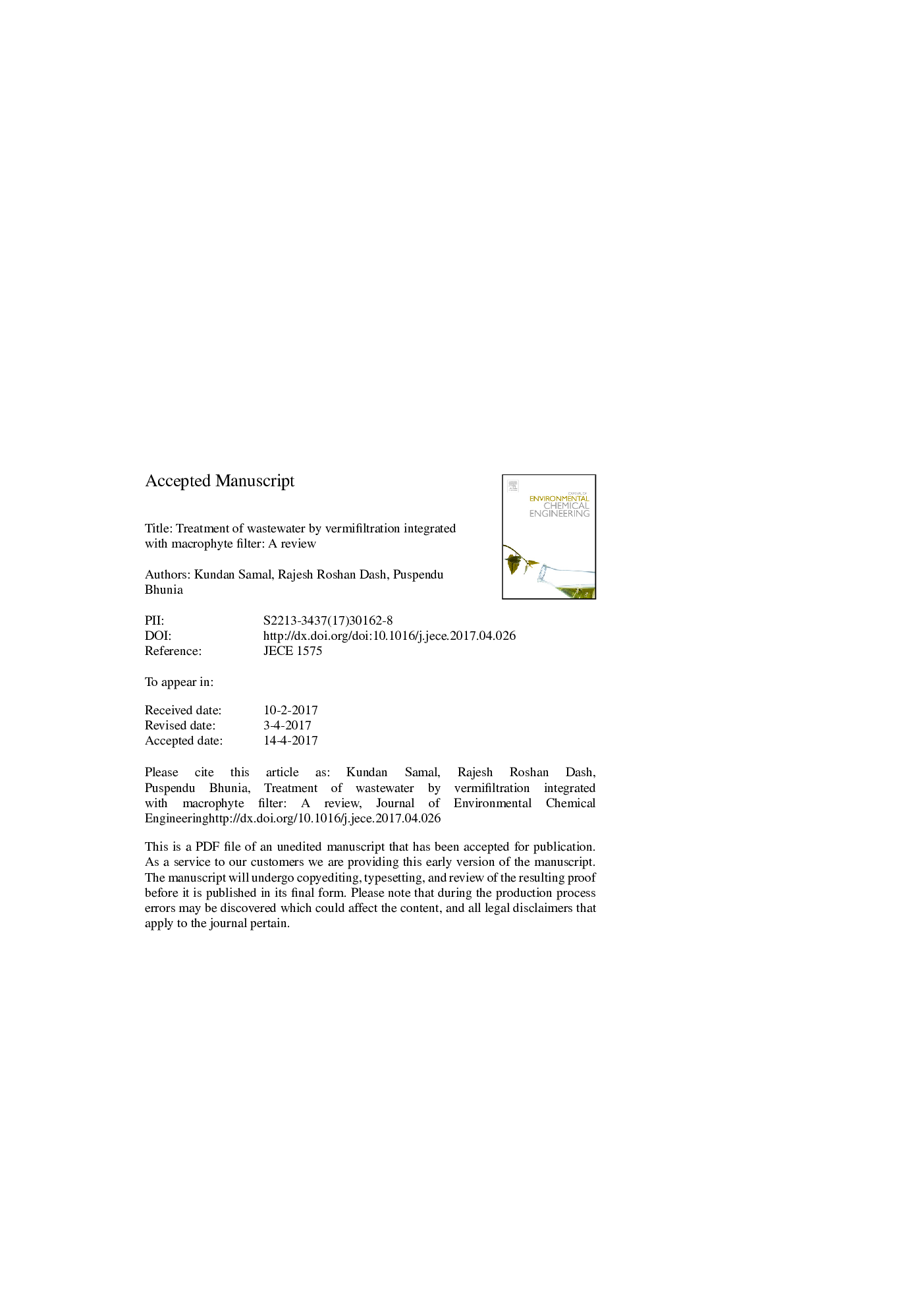| Article ID | Journal | Published Year | Pages | File Type |
|---|---|---|---|---|
| 4908351 | Journal of Environmental Chemical Engineering | 2017 | 63 Pages |
Abstract
Vermifiltration is an economically affordable and environmentally sustainable technology for treatment of wastewater. However, the long-term effective performance and field scale application of this system still remains a challenge due to some structural and functional limitations. Therefore, the recent researches are being focused on integrating vermifilters with macrophyte filters for efficient treatment of wastewater, its steady operation and large scale applications. The present review describes the mechanism and the effectiveness of vermifiltration alone and in combination with macrophytes filter for removal of various pollutants from wastewater such as organics, nutrients and pathogens. In addition to this, effect of various parameters on treatment process like hydraulic loading rate, feeding mode, earthworm density, mixed culture plant, filter media, organic carbon source, etc. have been discussed briefly. Based on the reviews, recommendations have been made for improving the performance and sustainability of the existing practices.
Keywords
CFUNDPHLRVermifilterPSMCAPSMPNSCODDGGEAOBHRTBODE. coliTDSTSSC/NVSsEscherichia colidissolved oxygenCLBAmmonium oxidizing bacteriamost probable numberbiochemical oxygen demandWastewater treatmentchemical oxygen demandDGGE, denaturing gradient gel electrophoresishydraulic retention timeHydraulic loading rateGapsvolatile suspended solidTotal dissolved solidTotal coliformsoluble chemical oxygen demandSolid waste managementMacrophytetotal nitrogenSustainabilitypotential of hydrogenCodTotal suspended solidtotal phosphorouscolony forming unitFecal coliform
Related Topics
Physical Sciences and Engineering
Chemical Engineering
Chemical Engineering (General)
Authors
Kundan Samal, Rajesh Roshan Dash, Puspendu Bhunia,
